Anker 757 PowerHouse Provides High-Powered, Portable Backup Power
Anker has long made battery backup solutions for portable electronics and eventually moved into larger power station products. The Anker 757 PowerHouse 1500W Power Station represents their biggest product yet. With fast charging and tons of connectivity options, could this device power your next remote outing?
The Portable and Durable Anker 757 PowerHouse
The Anker 757 PowerHouse has one of the more elegant designs we’ve yet seen in a power station. All of the controls and outlets live on the front of the unit. You also get a nice LED bar-style light across the top that emits enough light to let you see around a campsite—or even a jobsite table to read building plans.
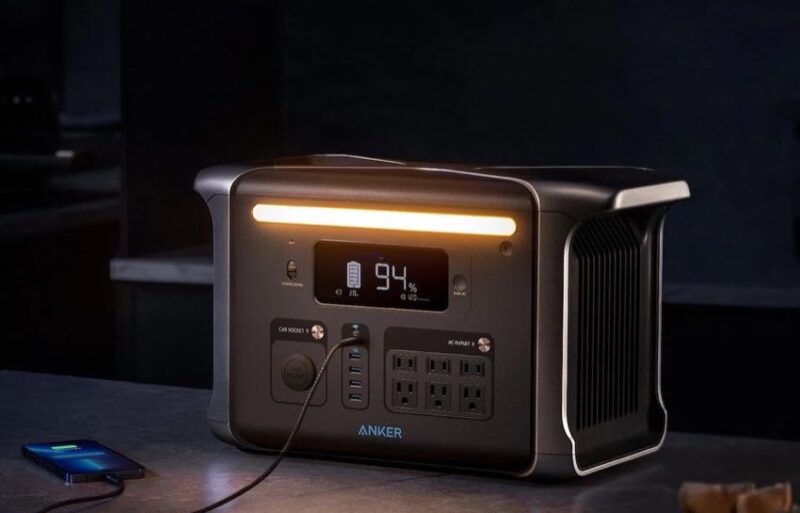
The 757 PowerHouse Power Station has convenient handles that line up well for deadlifting this giant battery. The only problem is that you can only deadlift it as there are no wheels to assist you in moving this 44-pound device from place to place.
Large Capacity and Power
All of that weight signifies something important, however. The Anker 757 Power Station doesn’t achieve its 1500W rating on its good looks. It also features 1,229Wh of battery capacity. While not the largest power center we’ve tested or seen, that still represents a good amount of stored energy.
Internally, Anker seems to have built the Powerhouse 757 to handle being run over by a truck. It has an aluminum frame that surrounds the electronics and 1229Wh worth of LFP (LiFePO4) cell batteries.
Several large heatsinks manage the heat associated with storing and unloading all of that potential power.
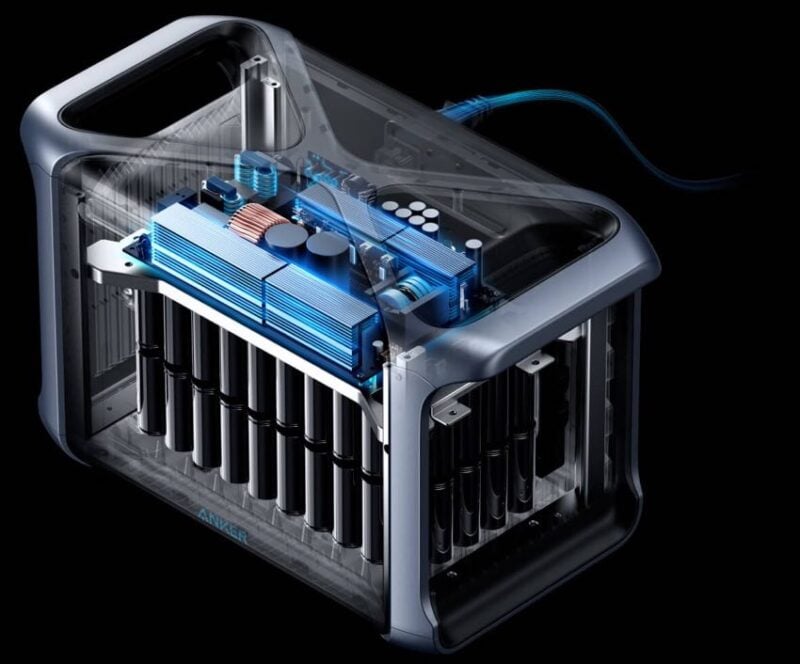
It claims to deliver an impressive 1,500W of output power with a 2,400W surge capability to handle aggressive startups. Anker also claims this device can handle the following tasks:
| Device | Power | Charges/Runtime |
|---|---|---|
| Charge Phone | 10Wh | 97X |
| LED Light | 12W | 82 hours |
| Fan | 35W | 28 hours |
| Recharge Drone | 40Wh | 24.5X |
| CPAP Machine | 40W | 24.5 hours |
| Portable Fridge | 45W | 22 hours |
| LCD TV | 110W | 9 hours |
| Refrigerator | 360W | 2.7 hours |
| Microwave | 700W | 1.4 hours |
| Coffeemaker | 1000W | 1 hour |
| Electric Grill | 1150W | 48 minutes |
| Corded Recip Saw* | 1200W | 48 minutes |
| Corded String Trimmer | 1200W | 48 minutes |
| Electric Chainsaw* | 1440W | 36 minutes |
| Demo Hammer* | 1500W | 36 minutes |
Real-World Testing
We connected a 15A DeWalt shop vac to the Anker 757. It draws around 1200 Watts and ran for exactly 54 minutes and 43 seconds. Based on the estimates given by Anker, that actually beat their number by 14%. We would consider that a win.
When testing with tools that stay under 1500W, the Anker supplied enough power to keep them going. As a temporary power source for medium-duty tools, you should be able to get some use out of this product. The higher the load, however, the less runtime you receive.
On a whim, we decided to test the Anker 757 with a more power-hungry tool, a Milwaukee 15A Super SawZall. This might be the best corded reciprocating saw on the planet—if not the most popular. Realize that this tool tops out around 1800W—well beyond the stated capabilities of this power station. Even so, the Anker PowerHouse 757 let me get about 3.5 cuts in before it shut off power to the outlets! After about a 30-second cool-down period, it let me turn the outlets back on and do another 3-4 cuts before it shut down again. We suspect the high current draw was the chief culprit. Color us impressed anyway.
Anker designed the PowerHouse 757 for less aggressive loads and longer runtimes. That’s not surprising, given its design. Even a sustained 12A tool draw (1440W) presents a very aggressive current load for battery-powered systems. A battery-backup system primarily designed for the jobsite would also have some more protection and portability—perhaps even a roll cage.
That doesn’t diminish the Anker in our opinion—it simply sets it up as a power source designed for camping, glamping, UPS functionality, and using all of that excellent battery storage for applications that better fit its design.
Recharging the Power Station
Recharging took only around 1.5 hours off a 20A 120V outlet. During the recharging process, we thought the Anker 757 wasn’t going to make it within the allotted time. On the LCD display, it kept saying it was only approaching 66% charge capacity after nearly 90 minutes. A moment later, the LCD indicated 100%, and the unit stopped charging. While not a great user experience—it completed charging in the time Anker claimed for a full charge. Presumably, if you stop it early and then check the battery gauge, you should get a fairly accurate number—just not while actually charging the power station.
Anker PowerHouse 757 Connectivity
For camping or anything else you can think of, the Anker 757 power station includes 13 ports for connecting all of your various devices.
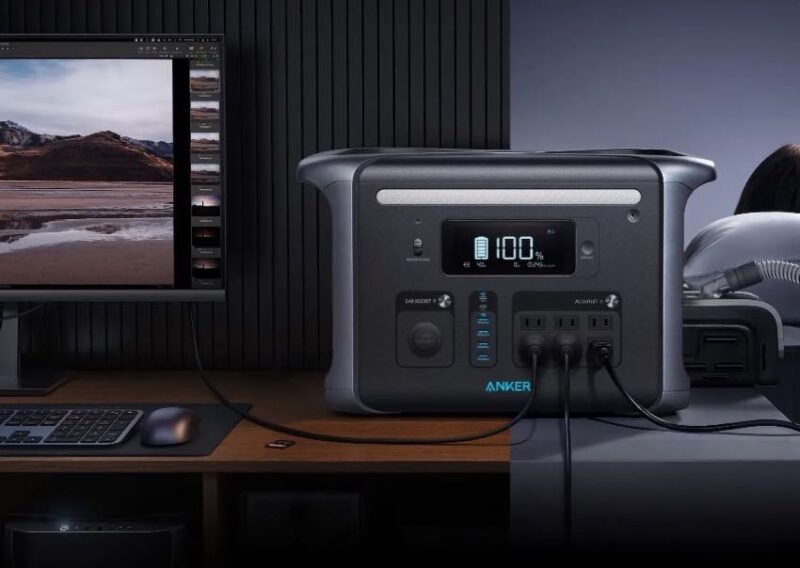
Here’s how that breaks down:
- 3 polarized 120VAC outlets
- 3 grounded 120VAC outlets
- 2 USB-C (100W max) ports
- 4 USB-A (12W max each) ports
- 12V (120W max) car outlet
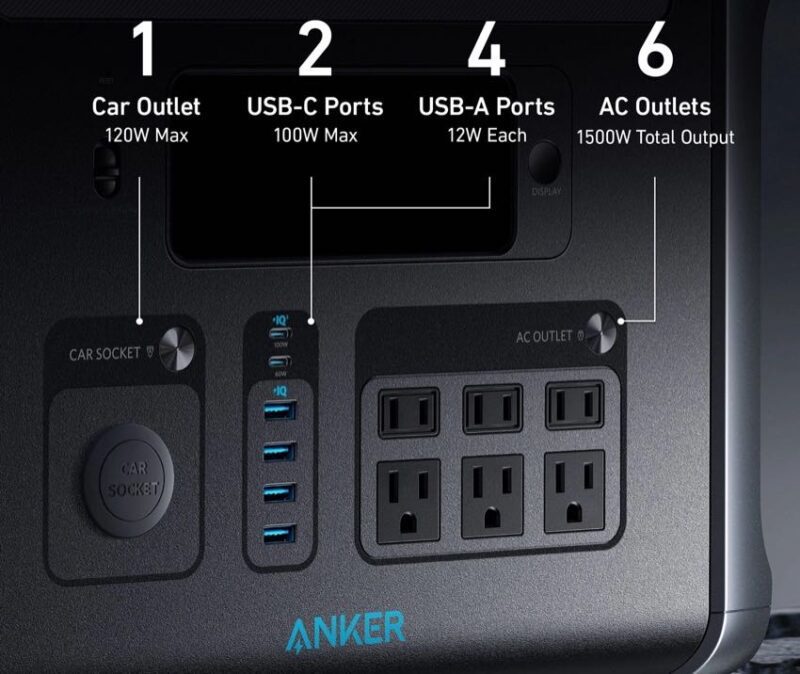
On the back of the unit, you find the 120VAC charging input, a connection for car or solar panel input, and the reset button.
Pure Sine Wave Output
Anker not only provides a capable battery backup system but also built it as an uninterruptible power supply (UPS) with a 20ms switchover time. It also has pure sine wave output on the six 120VAC outlets, so sensitive electronics get clean power. You may not care about that, however, cheap UPS systems without sine wave output can eventually damage products like refrigerators and certain medical equipment.
Recharge Rates
The Anker 757 PowerHouse recharges quite quickly for a power station this large. We connected it to a 20A circuit, and the PowerHouse 757 reached a 100% charge in one hour and thirty-two minutes. While we would have liked to have seen if it got to 80% in an hour as claimed—the truth is, the LCD display is highly inaccurate while charging. Right before the unit hit 100% it was showing 1.8 hours on the meter, a charge rate of ~300W, and 61% completion. 10 seconds later it hit 100% and stopped charging.
So, while we like the speed o the recharge process—and Anker does appear to charge as quickly as it claims—you won’t really know how it’s doing unless you interrupt the process and then check the display. When charging using an outlet, we recommend simply waiting at least an hour to 90 minutes (if you can afford the time) before reusing it.
Of course, if you want to go completely off the grid, you can connect up to 300W of solar panels to the 757. Do that, and you can recharge the Anker 757 to 80% capacity in less than 4 hours.
Other Features
- 50,000 hours of electronics life expectancy
- 6.1″ LCD Display
- 5-year limited warranty (doesn’t cover solar panels)
Pricing & Availability
You can pick up the Anker 757 PowerHouse 1500W Power Station for $1,399. If you want the Full Monty with three 100W solar panels, the cost is $2,299. Anker has a very active presence in the Amazon marketplace with several power products. You can also visit the Anker website for more information.
Anker 757 PowerHouse Power Station Specs
- Capacity: 1,229 Wh
- Battery cells: LiFePO4
- Dimensions: 18.2 x 11.3 x 9.3 in. (463 x 288 x 237 mm)
- Weight: 43.9 lbs. (19.9 kg)
- AC input: 1,000W (max)
- AC outputs: 6 (1,500W pure sine wave)
- Max output: 2,400W (surge)
- AC Recharge time: 1 hour to 80%, 1.5 hours to 100%
- Solar panel input: 300W (max)
- Solar recharge time: 3.6+ Hour to 80%
- Outputs: 6 x AC Outputs [1,500W Max (100-120V)]; 1 x Car Outlet (12.0V/10A Max); 4 x USB-A (12W); 2 x USB-C (100W and 60W);
- LED light: RGB Multicolor
- Warranty: 30-day money-back, 5-year limited warranty
- Includes: 757 PowerHouse, AC charging cable, car charging cable, parallel solar connection cables (XT-60 To DC7909 for up to 3 panels), dust-proof bag
- Price: $1,399

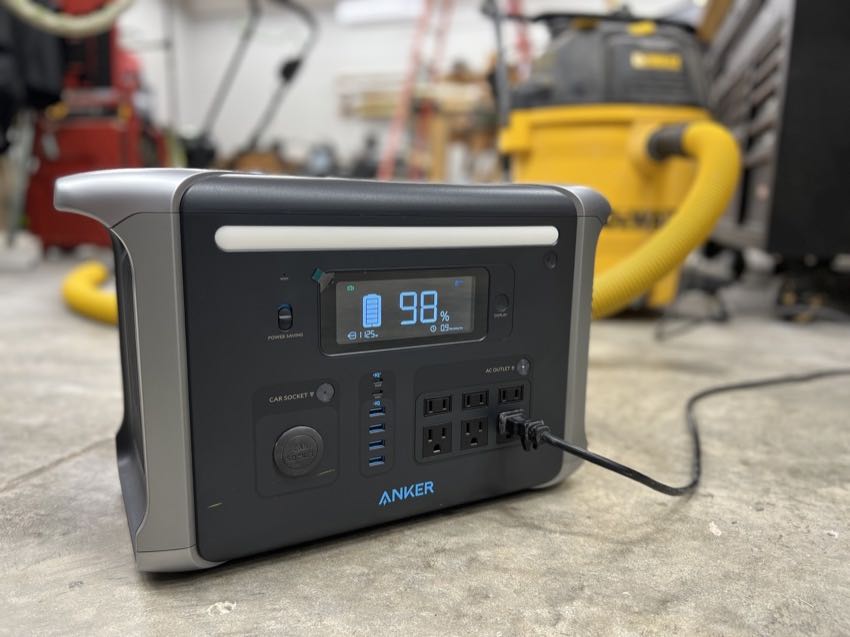


Looks impressive. I must wait a few more months to purchase. Maybe next sale in the fall I’ll buy it.
thanks